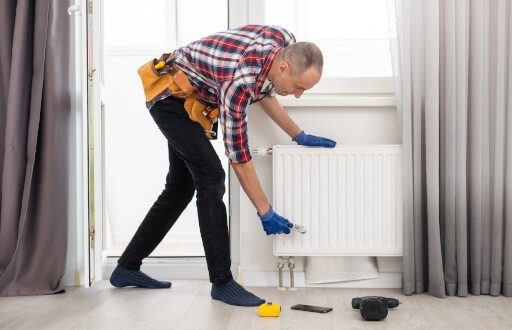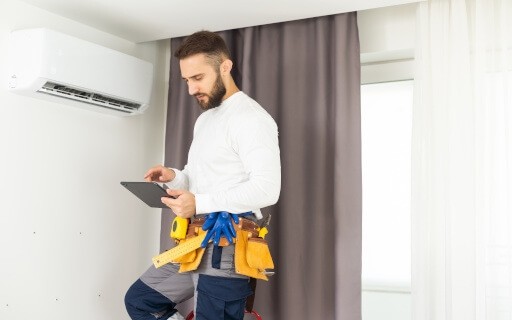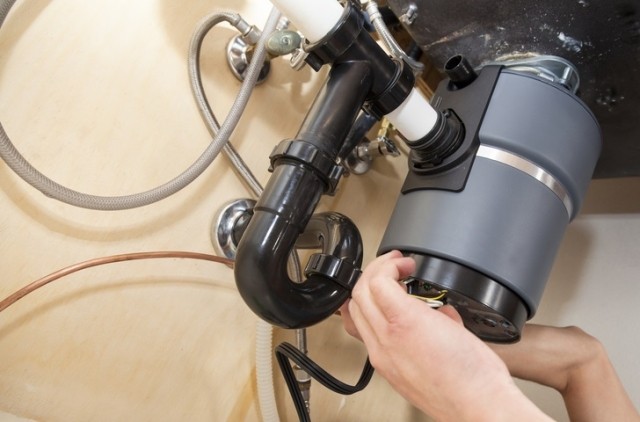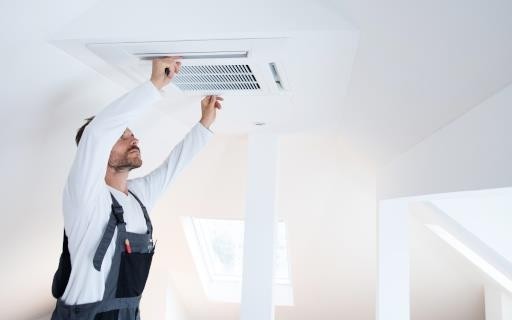When managing a rental property, landlords know that small factors, like maintenance requests, can snowball into significant responsibilities. Keeping track of your rental units, their repairs, and your tenants can feel overwhelming if you don’t have an efficient system. The best way to mitigate this is to create a standard procedure for maintenance. To efficiently and effectively handle rental property maintenance requests:
- Outline a routine
- Create a standardized request tracking system
- Decide who will fix the issue
- Keep communication open
- Budget for routine and unexpected maintenance repairs
Outline a Routine
To adequately tackle maintenance requests, outline a comprehensive routine. In your outline, include:
- How tenants will submit maintenance requests – This is essential when streamlining your maintenance. Decide how tenants can contact you to submit maintenance requests. Also, consider how tenants will submit emergency vs. non-emergency requests. Whichever system you choose should work effectively for both you and the tenant.
- The time you’ll take to respond to the request – Consider how long your tenant will need to wait before you confirm their request. When handling property maintenance, maintaining communication is critical. Make communication routine by holding yourself to a standard. For example, decide to confirm requests within 24-48 hours of submission.
- How long you’ll take to fill the request – Like communication, make your repair time consistent. Decide how long you will take to fill the request and stick to that timeframe. Most landlords take 3-7 days to fix a repair.
- How long you’ll wait before following up on the request – Landlords should follow up on maintenance requests to ensure the problem doesn’t persist. Decide when and how you’ll follow up with your tenant once you resolve their repair issue.
Creating a routine with an accompanying timeline may help make the repair process smoother. This way, landlords will have a system to abide by when maintenance requests appear.
Create a standardized request tracking system
After drafting your maintenance repair routine, create a standardized request tracking system. This system should allow you to track, review, and update:
- The warranties for the appliances in your rental unit – Keep track of which appliances have warranties, warranty expirations, and warranty conditions. If an appliance within your rental unit breaks, it may still qualify for its warranty. If it does, you can contact the company to replace it instead of replacing the fixture yourself.
- The dates you last provided routine maintenance for all properties – Routine maintenance is a part of every landlord’s responsibility. Reviewing when you last updated a property may help predict which rental units will need repairs in the future. Reviewing previous repairs can also help you keep track of what’s breaking the most often. With this information, you can prepare your budget and your inventory of maintenance supplies.
- Your inventory of miscellaneous supplies, such as lightbulbs – Keeping a “toolbox” of maintenance supplies for your rental units is wise. These supplies can include nails, screws, drain cleaners, or lightbulbs. Keep an inventory of all supplies you have. Also, make a note of when and where you use them. With the correct stock, you’ll be prepared to act immediately when a tenant submits a maintenance request.
- Which units need repair/maintenance - Keeping a record of the units you visit will help you review the frequency you make repairs there. Staying organized can help you prepare for future maintenance or decide if your tenant is damaging the property beyond normal wear and tear.
- The dates the tenants requested repairs/maintenance - Note the dates your tenant requested repairs so you can abide by the maintenance request routine you outlined.
- The dates you filled the tenant’s request – Reviewing when you filled the tenant's request can help you predict how long future maintenance requests will take. It can also help you track your productivity.
- The cost of each repair – Keeping track of costs can help you track your expenses and prepare a budget for future maintenance requests.
A system that tracks your requests, repairs, inventory, and efficiency can streamline the maintenance process and help you stay organized.
Decide Who Will Fix the Issue
Once you receive a request, decide who is responsible for the issue. Generally, landlords must fix maintenance issues relating to:
- Appliances and fixtures
- Plumbing
- Heat and air conditioning
- Electricity
- Clean water supply
- The property’s structural integrity (e.g., windows, doors, locks, cracks, etc.)
- Sanitary conditions
- Mold
- Pests
Landlords must ensure a rental unit stays in the same condition as when the tenant moved in. If your tenant’s request falls under your responsibility, the next step is determining who will issue the repairs.
Landlords can either fix the issues themselves or hire a contractor. In cases of quick fixes like lightbulb replacements or hanging wall fixtures, you can opt to fill the repair yourself. However, most circumstances require the work of a professional contractor. While it may be tempting to save time and money by fixing repairs yourself, hiring a reputable serviceman is wise. This way, you can ensure the repair was fixed correctly.
Pro Tip: To avoid dispute, insert a maintenance clause into your lease agreement. Outline whether landlords or tenants hold responsibility for specific maintenance issues and repairs, and abide by the lease agreement if any problems arise.
Keep Communication Open
Landlords handle maintenance requests for two reasons: to upkeep their property and to maintain a good landlord-tenant relationship. When your tenants are satisfied with your landlordship, they are more likely to renew their lease—which results in higher retention rates and fewer tenant-turnover costs. The best way to satisfy your tenants when handling maintenance requests is to keep communication open. Once your tenant files a request:
- Notify the tenant you received the request
- Send the range of dates and times during which you plan to fix the issue
- Clarify whether they’ll permit you to enter the unit if they are not present
- Send a follow-up email after you complete the request
Keeping open communication sets achievable expectations and boundaries between you and your tenants. Clarifying whether you should enter the unit if the tenant is not present shows you are willing to respect your tenant’s privacy. Notifying the tenant when you’ll fill the request shows you strive to timely complete your responsibilities. Tenants want to know they can trust their landlord to take care of their property. You can illustrate your willingness to preserve your property and keep your tenants happy by keeping communication open.
Budget for Routine and Unexpected Maintenance
Tenant repair requests can come unexpectedly. When they do, it’s best to be financially prepared. From a clogged pipe to a broken water heater, maintenance repairs can range in price and severity. To absolve these costs as they occur, reserve a budget expressly for repairs. Reference your request tracking system to see how much past repairs cost and estimate the amount you’ll need for the future. Having the funds available when necessary can help streamline your maintenance process and fix the issues faster.
In addition to budgeting for unexpected expenses, perform routine maintenance on all your rental properties. The best combatant to wear and tear is regular upkeep. During tenant turnover, ensure to assess the property and fix outstanding issues before they snowball into more significant problems.
Manage Maintenance Requests with Apartments.com
Dealing with maintenance requests can often feel like a juggling act. You’ve got tenants reaching out, schedules to coordinate, and service professionals to contact. It can get hectic, but Apartments.com has the solution. With our online maintenance platform, tenants can submit maintenance requests online. We notify you when you have a request, and you can easily update your tenants as the repair progresses. You can even attach receipts, upload notes, and track expenses for the repairs. You and your tenants can even share images and videos. Keeping everything in one place makes it easy to keep track of repairs, how often something is requiring repair, and how future repairs might impact your budget.
Frequently Asked Questions
How do you calculate maintenance on a rental property?
To plan for maintenance repairs, reserve 1% of your rental property’s purchase price. Once issues arise, track your expenses with Apartments.com to calculate the amount you spend on maintenance.
What maintenance is a tenant responsible for?
Tenants are responsible for the damage they incurred, damage incurred from the misuse of the property, and proper trash disposal.











